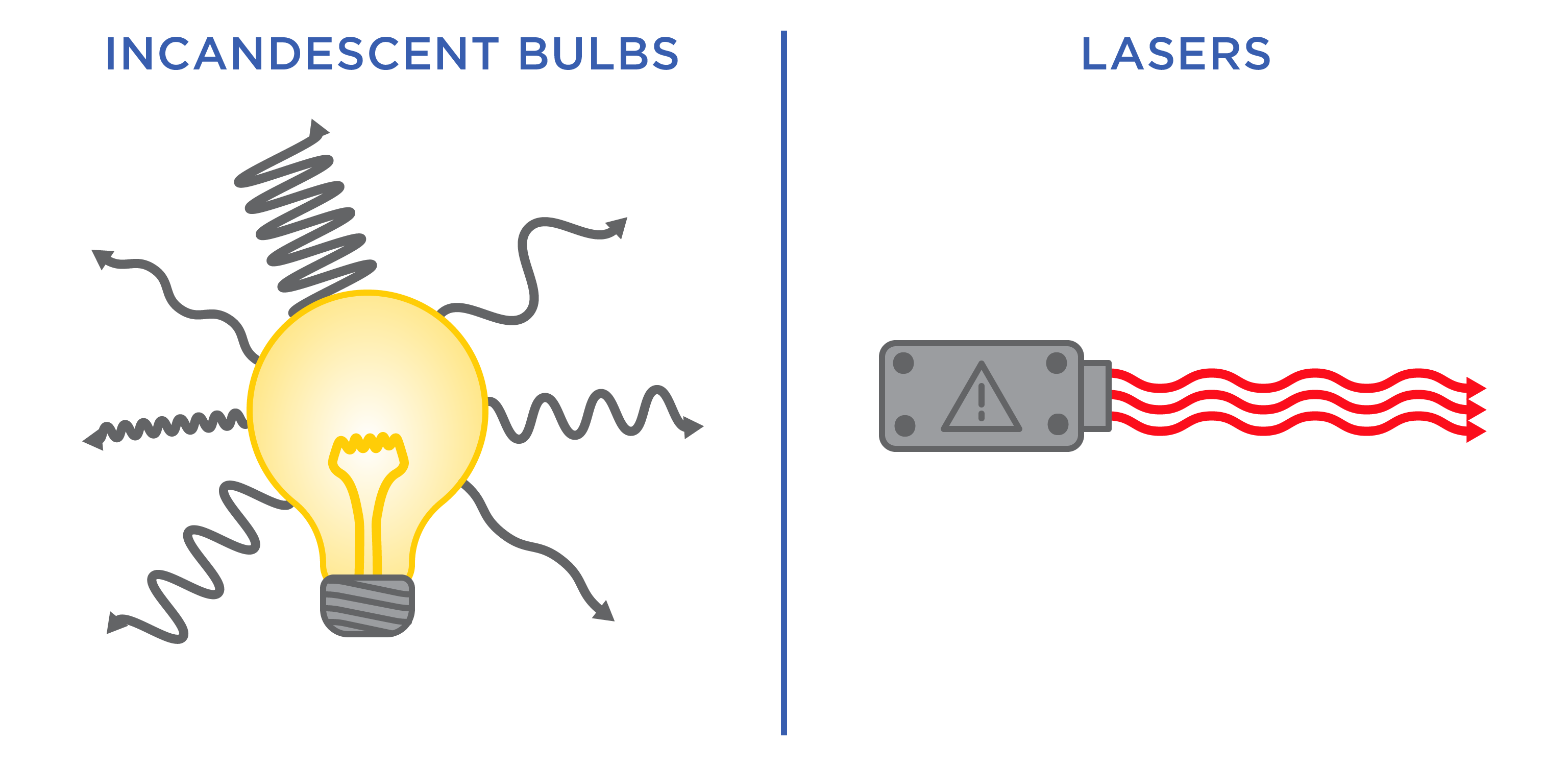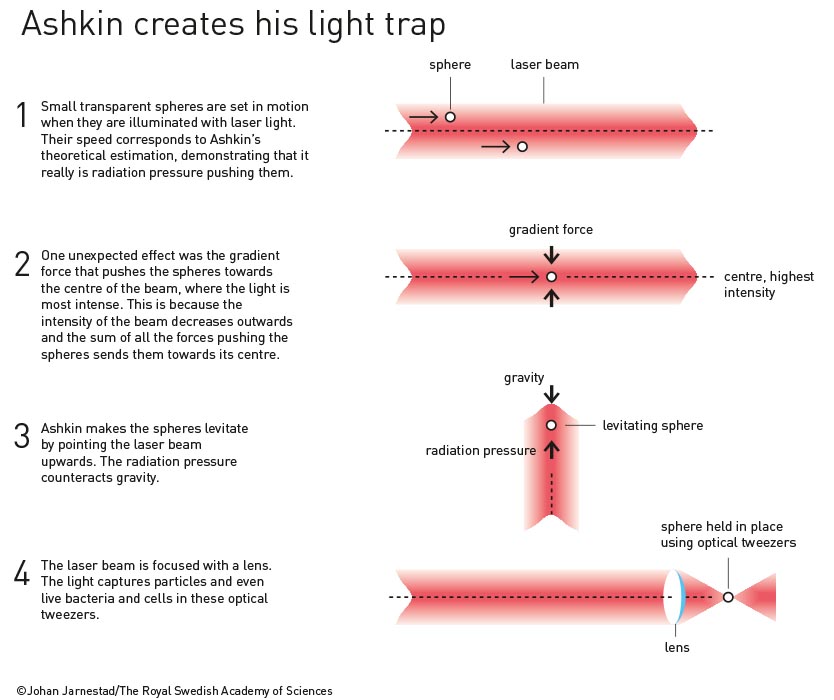Tools of light: laser tweezers
When you think of a laser, what comes to mind? Perhaps it’s a tool to carefully zap away unwanted things, destroying everything from body hair to cancer cells. Or perhaps it’s something a little more sci-fi, involving tractor beams that can grab asteroids or spacecraft and tow them through space.
Lasers can also be some of the most delicate tools in a science laboratory, capable of holding tiny microorganisms without killing them. While we haven’t figured out how to move asteroids with light just yet, we have worked out how to use lasers to move and manipulate individual particles and cells without destroying them.
Laser physicist Arthur Ashkin worked it out, to be precise. His invention, called ‘optical tweezers’, won him the 2018 Nobel Prize for Physics, shared jointly with Gérard Mourou and Donna Strickland for their technique to make very short, intense laser pulses.
Laser light is different to ordinary light. ‘White’ light, such as sunlight, is made up of a whole bunch of different wavelengths of light, all scattering in different directions. Lasers, on the other hand, are monochromatic (all the same wavelength and therefore colour), coherent (all those waves of energy line up on top of one another) and directional (travels in one narrow beam). These properties make lasers easier to manipulate and control, especially regarding the intensity of the beam.

As well as carrying energy, light (whether from sunlight or powerful lasers) has momentum in the form of radiation pressure: it can exert a force on objects in its path. These forces are usually so small that we don’t typically experience them in everyday life, but with the right laser you can use those tiny forces to push tiny things away.
Arthur Ashkin started tinkering with the idea of using lasers to gently hold particles in place. He noticed that particles were always drawn towards the very centre of the beam where the energy was most intense. To create a trap, he pointed a laser beam upwards. He found that he could make a particle levitate and stay held in place, as the radiation pressure pushing it upwards was balanced by the force of gravity pulling it downwards.
But it’s not always practical to rely on gravity to keep particles pinned in place. If you want to manipulate a microorganism that’s suspended in a sample of pond water, gravity isn’t going to be a strong enough force, thanks to other forces also pushing and pulling everything around in the liquid.
Ashkin solved this problem by popping a microscope lens into the path of a laser to focus the beam into a narrow point. This bent the rays of light, causing them to come together into a very narrow focus and strike the particle from different angles, rather than hitting it straight-on. This changes the way forces are applied to the particle—a ‘pull’ that opposes the light’s ‘push’—allowing tiny particles to become trapped at a very precise point.

With the development of these single-laser optical tweezers, it became possible to grab and manipulate very, very tiny particles and living things in three-dimensional space without causing them any harm. This opened an exciting new window into the microscopic world where scientists could delicately study, manipulate and measure forces at the smallest of scales.
How small? Very small: by using the tweezers to hold onto a small bead made of polystyrene or silica and attaching that bead to something that moves, scientists can measure the movement of the tiniest biological motors inside living cells. Thanks to these optical tweezers, we’ve already been able to measure the movement of things as small as protein molecules within living cells.
Optical tweezers also allow scientists to sort healthy cells from unhealthy ones, hold an individual bacterium in place without killing it, and assemble chemical compounds one atom at a time. The pioneering invention led to the development of a range of new technologies and methods to study and manipulate the microscopic world, enhancing biology, medicine and physics. These are now essential tools in scientific laboratories around the world—a significant achievement well worthy of a Nobel Prize.





